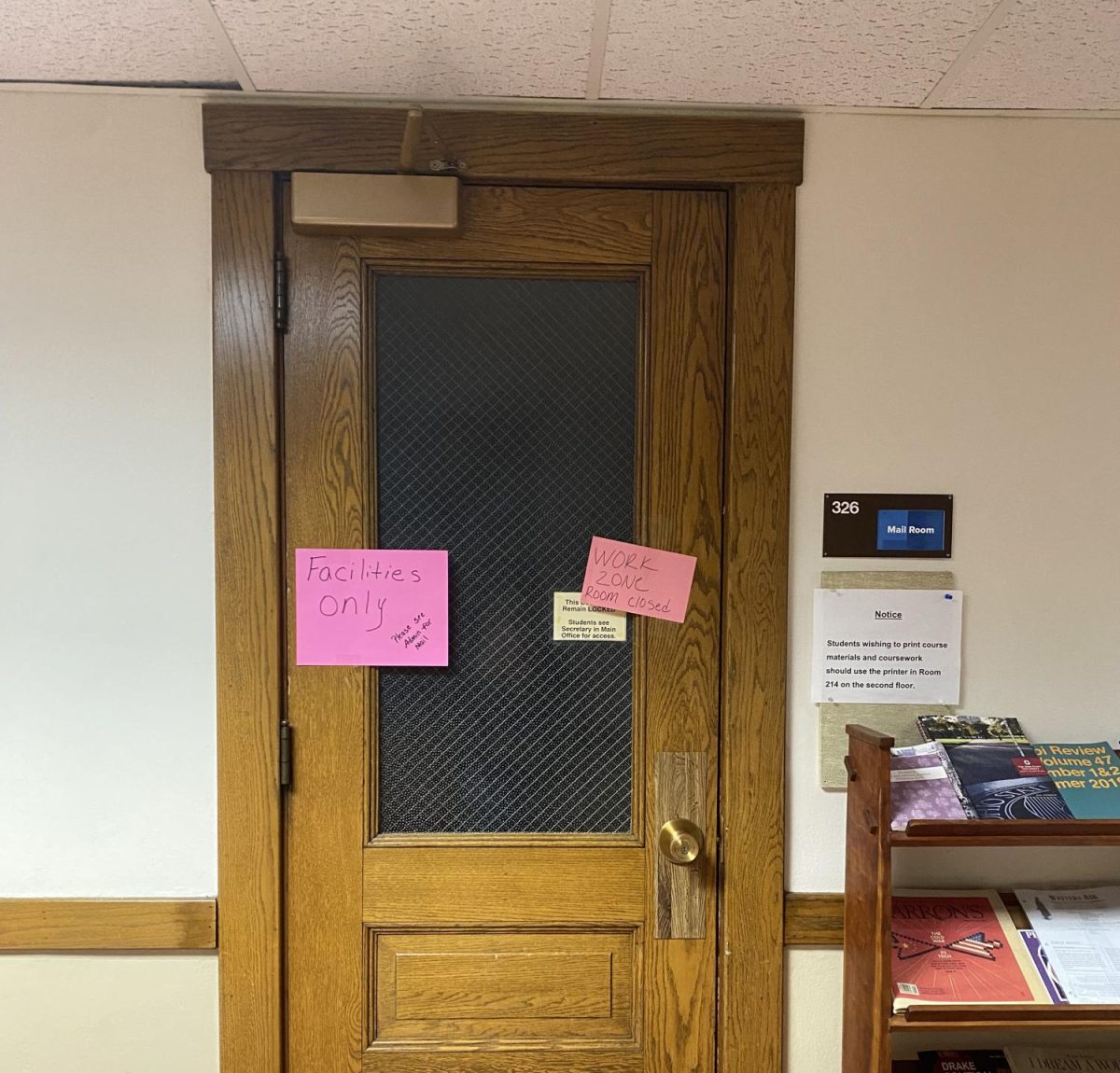Approximately two weeks ago, for unknown reasons, the cabinets in the mail room in Howard Hall fell off the wall. The disturbance revealed the presence of mold spores.
There are thousands of types of mold spores. According to United Water Restoration, a normal spore count for any given indoor space is 200-500, but as long as there isn’t water damage or visible mold colonies, anywhere up to 1,500 spores is normal.
Jen Rasmussen, director of environmental health and safety at Drake, said that the air in spaces on campus are tested as needed with a certified indoor environmental consultant. According to a report sent to Howard faculty members, in this case, the external company was Alliance Environmental Services. The consultant uses standard industry practices and an air sampling pump to conduct the tests and sends samples to certified labs to compare to outdoor samples.
“It is important to keep in mind that mold spores are everywhere, including normal indoor air environments,” Rasmussen said in an email interview. “What we want to do is make sure mold spore levels are lower indoors than outdoors, which they were in all tested spaces in Howard Hall.”
Rasmussen specified that there were five areas in Howard where water indicated spore presence — rooms 112, 128, 131, 325 and 329. The rooms, which are not currently in use due to the spore presence, will be thoroughly cleaned to prevent future issues. Rasmussen said that the facilities department communicated with professors who teach in Howard through email, telephone conversations, Microsoft Teams meetings and in-person meetings.
According to the report sent to faculty members, in two rooms — including the office of Amy Letter, who later had an allergic reaction — Stachybotrys, otherwise known as black mold, was found.
Jeff Karnicky, chair of the English department, said that he had participated in a meeting with the dean’s office, head of facilities, the provost and others where they discussed the procedure for handling the spores. On Sept. 27, facilities conducted indoor air quality tests, after which Karnicky participated in a meeting about the test results.
Currently, Karnicky said, facilities are planning to work on mitigation in the contaminated spaces over Fall Break, to avoid disrupting classes.
“First, I was glad when the cabinet fell that nobody got hurt, and then I was glad that once I voiced concerns about somebody having an allergic reaction and problems that facilities hired a company to test it right away,” Karnicky said. “It makes sense to wait until Fall Break to do the mitigation just because otherwise it would have been hard with people in the building.”
Rasmussen said that there are currently no federal standards for acceptable indoor airborne mold spore levels. Classes are being moved on a case-by-case basis.
“We may move classes out of an abundance of caution until more is known about the situation or until cleaning or remediation can occur in nearby spaces, even if the classroom itself is not directly impacted,” Rasmussen said in an email interview.
Letter, a professor of creative writing, works in office 329, one of those identified as contaminated. Letter experienced an allergic reaction to the spores, which she covered in a Substack post five days after they were discovered. The reaction required her to go to the emergency room.
“Picture you’re on fire and drowning and getting eaten by a shark all at the same time,” Letter said. “That’s what it felt like.”
At one point, Letter worried she would die, and that was when she went to the ER.
Originally, Letter did not know the cause, but after discussing her symptoms with fellow professors, they brought up the recently-discovered mold spores. While she had not been allergic to mold in her last testing five years ago, her doctor told her she could develop an allergy to anything at any point in her life.
While Letter was recovering, her coworkers forwarded her emails about how facilities was handling the spores.
Letter said that she and Kevin Moran, executive director of facilities planning and management, went through everything in her office to prepare it to be cleaned, from large furniture to books on her shelves.
“Everybody that I work with is doing absolutely the best they can,” Letter said.
Currently, Letter is teaching classes in Medbury Hall and has temporary office space in Meredith Hall.
Zach Wallace, a junior studying English, first heard about the spores when Letter, his professor, canceled their class due to the allergic reaction. Wallace was immediately concerned about his professor’s wellbeing but after that was curious about “what’s going on in Howard.”
Wallace said that professors were very communicative about the spores, the air testing and mitigation.
“I’ve been constantly reassured throughout the process — things are being done, student [and] faculty safety is a priority,” Wallace said.
Jack Harrington, facilities and technologies student senator at-large, heard about the spores approximately two weeks ago when classes were first canceled or moved because of the presence. He said that this is an issue that facilities themselves would handle, though he has been monitoring it.
“Howard is clearly an aging building, and there’s going to be problems with that, but it’s also a historical and lovely building,” Harrington said. “[We want to do] anything we can do to make sure it’s at its peak abilities and stays historically correct.”








